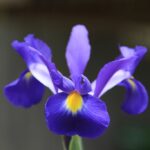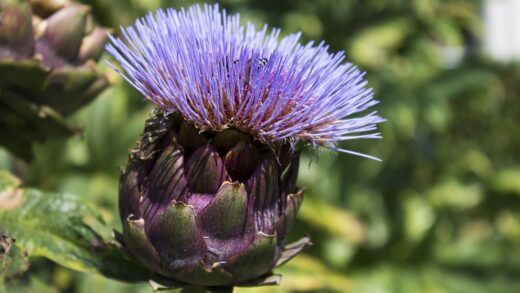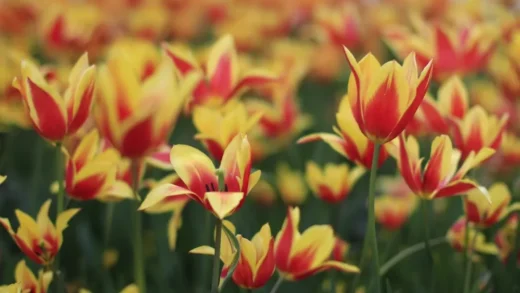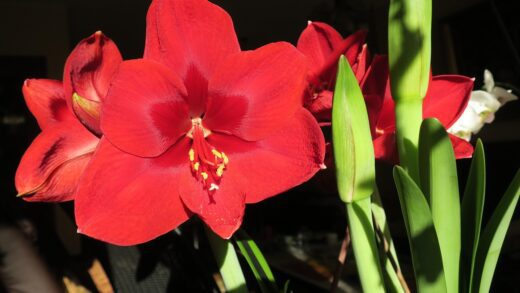Glory-of-the-snow are renowned for their resilience and are generally untroubled by significant disease and pest issues, making them a reliable choice for low-maintenance gardens. Their early emergence in the cool, crisp weather of spring allows them to complete most of their life cycle before many common garden pests and pathogens become active. However, like any plant, they are not entirely immune to problems. The most significant threat to their health is not an insect or a specific disease but rather poor growing conditions, particularly waterlogged soil, which can lead to bulb rot. Understanding the potential issues, recognizing their symptoms, and employing preventative cultural practices are the keys to keeping these spring beauties healthy and thriving.
The vast majority of problems encountered with glory-of-the-snow can be traced back to environmental factors rather than to specific pathogens or pests. The single greatest health risk is bulb rot, a general term for the decay of the bulb caused by various soil-borne fungi and bacteria. These microorganisms flourish in anaerobic, overly wet conditions. Therefore, the most effective disease prevention strategy is to provide the bulbs with the well-drained soil they absolutely require.
While insect pests are rarely a major concern, certain soil-dwelling creatures can occasionally cause damage. Slugs and snails may be attracted to the tender new growth in early spring, and the larvae of some flies, such as the narcissus bulb fly, can potentially infest the bulbs, although this is uncommon for Chionodoxa. More often, the culprits causing damage or disappearance of the bulbs are larger animals, such as squirrels, chipmunks, and voles, which may dig up and consume the bulbs as a food source.
Ultimately, the best defense against diseases and pests is a strong offense based on proper cultivation. A healthy, vigorous plant growing in its preferred conditions—well-drained soil, appropriate sunlight, and proper post-bloom care—is inherently more resistant to problems. By focusing on creating an ideal growing environment, the gardener can largely avoid the need for reactive treatments and can enjoy their glory-of-the-snow with minimal worry.
Common fungal diseases affecting bulbs
The most prevalent disease issue affecting glory-of-the-snow is bulb rot. This is not a single disease but rather a complex of problems caused by various soil-dwelling fungi, such as Fusarium, Pythium, and Rhizoctonia. These pathogens are opportunistic and thrive in soil that is poorly drained and remains saturated for extended periods. The symptoms of bulb rot occur below ground, but the effects are visible above ground as a failure of the bulb to sprout, stunted yellowing growth, or the sudden collapse of a seemingly healthy plant.
When an affected bulb is dug up, it will typically be soft, discolored, and mushy, often with a foul odor. The basal plate, where the roots emerge, is a common site for infection to begin. Once a bulb has begun to rot, there is no cure, and it should be removed and destroyed to prevent the spread of the pathogens in the soil. The fungi that cause bulb rot can persist in the soil for a long time, making prevention the only viable strategy for control.
Another, less common fungal issue is gray mold, caused by the fungus Botrytis cinerea. This disease typically affects plants during cool, damp, and overcast weather. It can cause spotting on the flowers and, in severe cases, can lead to a fuzzy gray mold growth on decaying plant tissues, such as spent flowers and dying leaves. While it is rarely a serious problem for Chionodoxa, it can be unsightly.
To mitigate the risk of gray mold, ensure good air circulation around the plants by not overcrowding them. Avoid overhead watering, especially in the evening, as wet foliage provides an ideal environment for the fungus to develop. Promptly remove any heavily infected plant parts to reduce the amount of fungal spores in the area. In most garden situations, gray mold on glory-of-the-snow is a minor, transient issue that resolves as weather conditions become warmer and drier.
Preventative measures for disease control
The cornerstone of disease prevention for glory-of-the-snow is impeccable sanitation and proper cultural practices, starting with the bulbs themselves. Always purchase bulbs from a reputable supplier and inspect them carefully before planting. Discard any bulbs that show signs of mold, soft spots, or physical damage. Planting only healthy, top-quality bulbs provides a strong foundation and reduces the risk of introducing pathogens into your garden soil.
The most critical preventative measure is ensuring the planting site has excellent drainage. This cannot be overemphasized. Before planting, amend heavy clay or compacted soils with generous amounts of organic matter like compost and inorganic material like coarse sand or grit. This improves the soil structure, creating more air spaces and allowing excess water to drain away from the bulbs. Planting in raised beds or on a natural slope can also be an effective strategy to guarantee good drainage.
Proper spacing of the bulbs is also important for disease prevention. While they should be planted in clusters for visual impact, avoid cramming them too tightly together. Good spacing, typically two to three inches apart, ensures that there is adequate air circulation around the plants once they emerge. This allows the foliage to dry more quickly after rain or irrigation, which helps to inhibit the development of foliar fungal diseases like gray mold.
Finally, managing the post-bloom phase correctly contributes to disease prevention. Allowing the foliage to die back naturally is essential for the bulb’s health. Once the foliage has completely withered, it should be cleaned up and removed from the garden, especially if there were any signs of disease during the growing season. This garden hygiene practice removes potential overwintering sites for fungal spores and other pathogens, helping to ensure a clean start for the plants in the following spring.
Identifying and managing common pests
Glory-of-the-snow are generally resistant to most insect pests, but a few can occasionally cause minor issues. Slugs and snails can be a nuisance in the early spring, as they are attracted to the tender new leaves and flowers. They chew irregular holes in the foliage and can damage the blooms. In most cases, the damage is cosmetic and not a serious threat to the plant’s health. Management can be as simple as hand-picking the pests in the evening or using environmentally friendly baits or traps if the population is large.
Aphids are another potential pest, although they are more common on other spring bulbs like tulips. These small, sap-sucking insects may colonize the leaves and flower stems, particularly if the plants are under stress. A small infestation is usually not a cause for concern and can be managed by a strong spray of water from a hose, which will dislodge them. Natural predators like ladybugs and lacewings often keep aphid populations in check in a healthy garden ecosystem.
A more serious, though thankfully rare, pest for bulbs is the narcissus bulb fly. The adult fly resembles a small bumblebee and lays its eggs near the base of the plant in late spring. The emerging larva, a single large maggot, burrows into the bulb and feeds on its interior, hollowing it out and killing the plant. A tell-tale sign of an infestation is a bulb that fails to emerge or has weak growth. Squeezing the bulb will reveal its soft, hollowed-out nature. There is no treatment for an infested bulb; it must be dug up and destroyed to prevent the fly from completing its life cycle.
Preventing narcissus bulb fly infestations involves a few cultural practices. After the foliage has died back, the hole left by the stem can provide an entry point for the fly. Covering the area with a layer of mulch can help to deter the adult fly from laying its eggs. Since the fly is most active in late spring, the early senescence of Chionodoxa foliage may help it to avoid the peak activity period of this pest, which is one reason why infestations are not common.
The threat of rodents and larger animals
Often, the most significant “pest” problems for glory-of-the-snow are not insects but vertebrate animals. Several types of rodents and other wildlife find the bulbs to be a tasty food source, particularly during the autumn and winter when other food is scarce. Squirrels and chipmunks are notorious for digging up newly planted bulbs. They are often attracted to the disturbed soil and will excavate the area to find and consume the bulbs, or sometimes to re-cache them elsewhere.
Voles, which are small, mouse-like rodents that create tunnels just under the soil surface or under a layer of mulch or snow, can also be very destructive. They feed on bulbs and roots from below, so the damage is not visible until the plant fails to emerge in the spring. If you suspect voles, you may see their characteristic surface runways in the lawn or garden beds. Moles, while not bulb-eaters themselves, can cause damage by disturbing and heaving bulbs as they create their deeper tunnels.
There are several strategies to protect bulbs from these animals. One effective method is to plant the bulbs in wire cages made from hardware cloth. The bulbs are planted inside the cage, which is then buried in the ground, providing a physical barrier against digging and tunneling animals. Alternatively, a layer of hardware cloth can be laid over the top of the planting area, just below the soil surface, to deter digging from above.
Another approach is to use repellents. Sprinkling sharp, gritty materials like crushed oyster shells or gravel into the planting hole and around the bulbs can deter rodents, as they dislike digging through it. There are also commercial granular repellents, often containing castor oil or predator urine, that can be applied to the soil surface after planting. The early flowering habit of glory-of-the-snow also provides some protection, as they are not favored by deer or rabbits, which tend to browse on later-emerging plants like tulips.
Integrated pest management strategies
An integrated pest management (IPM) approach is the most sustainable and effective way to handle potential pest and disease issues for glory-of-the-snow. IPM is a holistic strategy that prioritizes preventative measures and uses control methods only when necessary, favoring the least toxic options first. The foundation of IPM is a healthy garden environment. By focusing on building healthy soil, choosing appropriate planting sites, and using correct cultural practices, you create vigorous plants that are naturally more resistant to problems.
Regular monitoring of the plants is a key component of IPM. Take time to observe your glory-of-the-snow during their spring growth period. Look for any signs of trouble, such as discolored leaves, damaged flowers, or the presence of pests. Early detection of a problem allows for a much quicker and easier resolution. For example, removing a few slug-damaged leaves or washing off a small aphid colony is a simple task that can prevent a larger issue from developing.
IPM encourages the use of physical and biological controls before resorting to chemical options. This could mean using physical barriers like wire cages to protect bulbs from rodents, hand-picking slugs, or relying on natural predators to control aphid populations. Creating a garden that is hospitable to beneficial insects, birds, and other wildlife will establish a natural system of checks and balances that helps to keep pest populations at manageable levels.
Chemical controls should always be the last resort in an IPM program. If a pest or disease problem becomes severe enough to warrant chemical intervention, choose the least toxic and most targeted product available. For example, using an insecticidal soap for a heavy aphid infestation is preferable to a broad-spectrum insecticide, which would also kill beneficial insects. For glory-of-the-snow, however, the need for chemical intervention is exceptionally rare, as good cultural practices are almost always sufficient to keep the plants healthy.




















